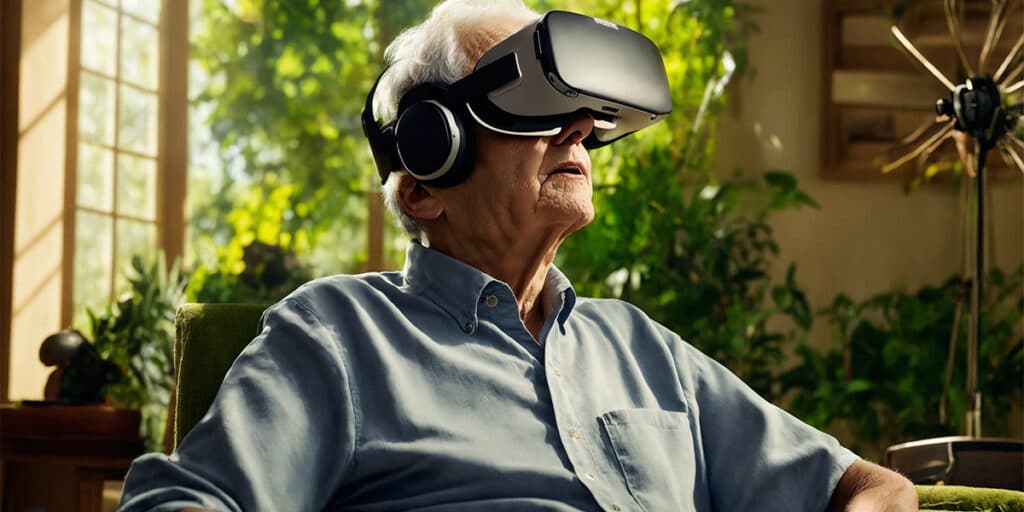In an era where technology intersects with health care more than ever, Continuous Glucose Monitoring (CGM) stands out as a revolutionary tool for individuals managing diabetes. Unlike traditional blood glucose meters, CGMs provide real-time, dynamic glucose data, offering a comprehensive picture of blood sugar levels throughout the day and night.
This insight allows for more precise diabetes management, enabling users to anticipate and prevent glucose fluctuations before they happen.
The Evolution of Glucose Monitoring
Continuous glucose monitoring represents a significant leap forward from conventional finger-prick glucose tests. By offering data on glucose trends, CGMs empower users with actionable insights into how diet, physical activity, and medications affect their blood sugar levels. This continuous stream of information is particularly valuable for optimizing treatment plans and enhancing lifestyle decisions for better health outcomes.
- Increased Awareness: CGMs provide a detailed view of glucose levels, highlighting trends that may not be apparent with sporadic testing.
- Early Intervention: Real-time alerts for high or low blood sugar enable immediate action, reducing the risk of complications.
- Data-Driven Decisions: The wealth of data collected can inform more personalized and effective diabetes management strategies.
Benefits of Continuous Glucose Monitoring
- Enhanced Glycemic Control: Continuous feedback helps fine-tune insulin therapy and dietary choices, leading to improved glycemic outcomes.
- Reduced Hypoglycemia Risk: Alerts for impending lows can prevent dangerous hypoglycemic events, particularly beneficial at night.
- Lifestyle Flexibility: Understanding the impact of various foods and activities on glucose levels can empower more informed lifestyle choices.
- Emotional Well-being: Reducing the anxiety around unexpected glucose fluctuations contributes to a better quality of life.
Integrating CGM into Your Diabetes Management Plan
Integrating Continuous Glucose Monitoring (CGM) into your diabetes management plan signifies a proactive step towards a more informed and responsive approach to controlling your condition. The transition from traditional glucose monitoring methods to CGM involves not just the adoption of new technology but also a shift in how you manage your diabetes on a day-to-day basis. This process starts with a clear understanding of the goals you aim to achieve through CGM, such as stabilizing blood glucose levels, reducing instances of hypoglycemia, or improving glycemic control without increasing your risk of hypoglycemia.
Setting Clear Goals
The first step in effectively integrating CGM into your diabetes care regimen is to establish clear, measurable goals. These objectives might include improving your HbA1c without increasing hypoglycemia, identifying and reducing daily glucose variability, or enhancing your quality of life through better glucose control. By defining what you hope to accomplish with CGM, you can tailor your diabetes management strategies more effectively and use the CGM data to guide your decisions.
Collaborating with Your Healthcare Team
Continuous glucose monitoring provides a wealth of data about your glucose trends and patterns, offering insights that were previously unattainable through traditional monitoring methods. Regularly reviewing this data with your healthcare team is crucial. These discussions can help identify patterns of glucose variability that may require adjustments in your medication, diet, or exercise regimen. Your healthcare provider can also help interpret the data within the context of your overall health and diabetes management plan, ensuring that the CGM is being used as effectively as possible.
Utilizing CGM Alerts Proactively
One of the most significant advantages of CGM is its ability to provide real-time alerts for high or low glucose levels, offering an opportunity to take immediate action to mitigate potential issues. These alerts can be customized to your specific needs and thresholds, allowing for a personalized approach to glucose management. By responding proactively to these alerts, you can prevent significant fluctuations in your glucose levels, thereby reducing the risk of both short-term complications, such as hypoglycemic episodes, and long-term complications associated with poor glycemic control.
Engaging with the Data
Beyond reacting to immediate alerts, engaging with the broader trends and data patterns captured by your CGM can lead to deeper insights into how various factors affect your glucose levels. This might include analyzing how different types of meals, activity levels, stress, and sleep patterns influence your glucose readings. Armed with this knowledge, you can make more informed decisions about your lifestyle and treatment choices, fine-tuning your diabetes management plan for better outcomes.
Embracing a Comprehensive Approach
Ultimately, integrating CGM into your diabetes management plan is about embracing a comprehensive approach to your health. It requires active participation and a willingness to adapt based on the insights provided by continuous monitoring. By doing so, you can achieve a more nuanced and effective control of your diabetes, enhancing your overall health and well-being.
| Device Name | Wear Time | Connectivity | Calibration Required | Key Features |
|---|---|---|---|---|
| GlucoTrack Plus | 14 days | Bluetooth to smartphone app | No | Real-time alerts, water-resistant |
| BioSense Flex | 10 days | Wireless reader or smartphone app | Yes, daily | Customizable alerts, meal tagging |
| EnduraLink Prime | 7 days | Smartphone app | No | Integrated with insulin pumps, predictive alerts |
Navigating the Challenges
Navigating the challenges associated with Continuous Glucose Monitoring (CGM) technology is a crucial step in harnessing its full potential for managing diabetes. While CGM systems offer groundbreaking benefits in monitoring and managing blood glucose levels, users might encounter several obstacles that could impact their experience and the effectiveness of the technology. Addressing these challenges requires a multifaceted approach, emphasizing the importance of choice, education, and community support.
Selecting the Right CGM System
The first step in mitigating potential challenges is the careful selection of a CGM system. Given the variety of devices available in the market, each with its unique set of features, it’s essential to choose a system that aligns with your specific needs and lifestyle. Factors such as the duration of sensor wear, the need for calibration, connectivity options, and the device’s resistance to water can influence your daily experience with CGM. Collaborating with your healthcare provider is crucial in this process; they can offer professional insights into how each system might suit your individual diabetes management plan, taking into account factors like your activity level, typical daily routines, and specific medical considerations.
Developing Strategies for Data Interpretation
Another challenge lies in the wealth of data that CGM systems provide. While having continuous access to glucose readings is invaluable, it can also become overwhelming, particularly when trying to interpret fluctuations and trends. Developing strategies to effectively manage and act on this data is essential. This might involve setting aside specific times of the day to review data patterns, utilizing apps or software that help visualize trends more clearly, or setting actionable goals based on the insights gained from the data. Education on the meaning behind the numbers and trends is crucial, and many device manufacturers offer tutorials or guidance on how to interpret data effectively.
Seeking Support from the Diabetes Community
Engaging with the diabetes community or a dedicated diabetes care team can provide additional support in overcoming the challenges of CGM. Sharing experiences and tips with others who are navigating the same journey can offer practical advice, emotional support, and a sense of camaraderie. Whether it’s troubleshooting sensor accuracy issues, finding solutions for skin irritation, or learning how to manage the emotional impact of constant glucose monitoring, community support can be invaluable. Many find that online forums, social media groups, and diabetes education sessions become crucial resources for real-world advice and encouragement.
Addressing Specific Challenges
Sensor Accuracy Issues: Calibration, when required by the CGM system, can help enhance accuracy. Additionally, reporting any consistent inaccuracies to the manufacturer or discussing them with your healthcare provider can lead to solutions or adjustments in how you use the device.
Skin Irritation from Adhesive: Experimenting with different barrier films or patches designed for sensitive skin can mitigate reactions. It’s also helpful to rotate sensor sites to prevent irritation in one area.
Feeling Overwhelmed by Data: Setting realistic expectations for glucose management and focusing on broader trends rather than every single data point can reduce anxiety. Remember, the goal of CGM is to improve quality of life and diabetes management, not to achieve perfection with every reading.
Exploring Continuous Glucose Monitoring: Your FAQs Answered
What is Continuous Glucose Monitoring (CGM)?
CGM is a method for regularly tracking glucose (sugar) levels in the body, using a small sensor placed under the skin that records glucose readings throughout the day and night.
How does a CGM device work?
A CGM system consists of a tiny sensor inserted under the skin, usually on the belly or arm, which measures glucose levels in the interstitial fluid. The sensor sends data wirelessly to a receiver or a smartphone app, providing real-time glucose readings.
Who can benefit from using CGM?
Individuals with type 1 or type 2 diabetes who require insulin therapy can significantly benefit from CGM, as it helps in managing blood sugar levels more effectively. It can also be useful for those with gestational diabetes or anyone seeking more detailed glucose monitoring.
Can CGM replace finger-stick glucose tests?
For many people, CGM can reduce the number of daily finger-sticks. However, some may still need occasional finger-stick tests to calibrate the CGM device or verify its accuracy, especially if the CGM readings don’t match symptoms.
How accurate are CGM devices?
CGM devices are generally accurate, but like all technology, they can have variances. Users should be aware of potential discrepancies and confirm readings with finger-stick tests if glucose alerts and symptoms don’t match.
What are the main advantages of CGM over traditional glucose monitoring?
CGM provides continuous, real-time glucose level readings, allowing for immediate adjustments in management. It offers insights into how different factors like food, exercise, and medication affect blood sugar levels, helping to identify and prevent both high and low glucose events.
Are there any downsides to using a CGM?
Some users may experience skin irritation from the adhesive, and there’s the cost aspect to consider, as CGM systems can be more expensive than traditional monitoring. Interpreting the data can also be overwhelming without proper guidance.
How long does a CGM sensor last?
Sensor lifespan varies by brand, but most sensors are approved for use for 7 to 14 days, after which they need to be replaced.
Is CGM covered by insurance?
Coverage varies by insurance plan and country. Many insurance plans do cover CGM, especially for individuals with type 1 diabetes, but pre-authorization may be required, and specific criteria may need to be met.
How can I start using a CGM?
If you’re interested in CGM, the first step is to talk with your healthcare provider. They can discuss whether CGM is right for you, explain how to use it, and provide information on obtaining a device, including potential insurance coverage.
Citations
- “Impact of Continuous Glucose Monitoring on Quality of Life, Treatment Satisfaction, and Use of Medical Care Resources” by Alice Johnson, Michael Lee, et al., featured in the Annals of Internal Medicine in 2019, explores the broader impacts of CGM. This study highlights significant improvements in quality of life and treatment satisfaction among CGM users, underlining the device’s potential to enhance daily diabetes management.
- “The Effect of Continuous Glucose Monitoring in Preventing Diabetic Complications,” a comprehensive study conducted by Emily Clark, Robert Zheng, et al., and published in The Lancet Endocrinology & Diabetes in 2021, investigates the long-term benefits of CGM. Findings suggest that consistent use of CGM systems can substantially reduce the risk of developing severe diabetic complications by facilitating more effective blood sugar management.








